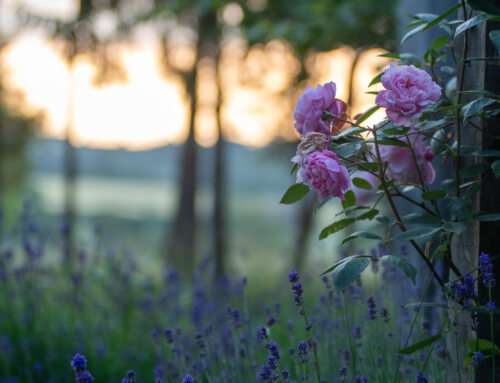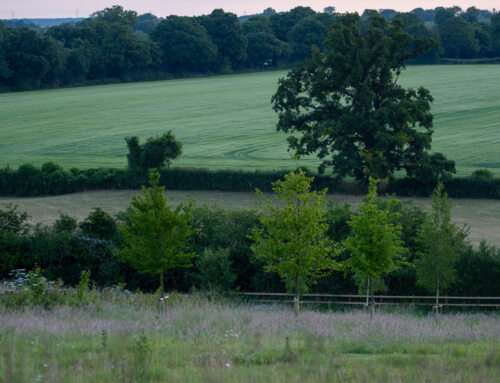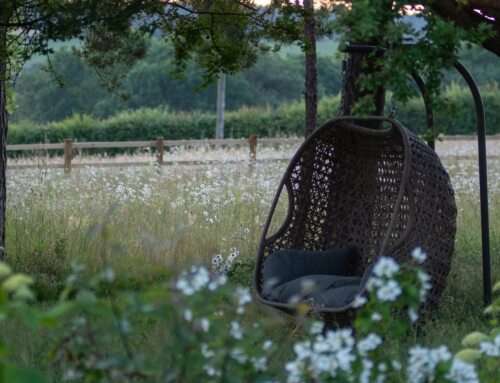A Brief Introduction to Agroforestry
By Will Beament
Increasingly in the contemporary world, Environmentalism is slowly being incorporated into every facet of modernity. Whether this is through policy via the encompassing umbrella of ‘Sustainable Development’, through direct-action following law, or simply through the desire of ‘grass roots’ change. Being in the industry of green infrastructure and designing Landscapes, one often finds themselves flanked with innovative ways of confronting the maladies that our way of life imposes directly or indirectly to our planet.

However, what is often seen left by the wayside in discussion is Agroforestry.
To quote the Agroforestry Research Trust, a UK based charity devoted to the growth of the practice:
Agroforestry is the growing of both trees and agricultural / horticultural crops on the same piece of land. They are designed to provide tree and other crop products and at the same time protect, conserve, diversify and sustain vital economic, environmental, human and natural resources. Agroforestry differs from traditional forestry and agriculture by its focus on the interactions amongst components rather than just on the individual components themselves.
In reality, Agroforestry is no new innovation. In the UK, as well as many other parts of the world, Agroforestry is very much a tradition – a tradition that reflects a quintessential material and symbolic part of our Landscape. The hedgerow, for instance, not only defines boundaries but also serves as a habitat for wildlife. Trees have also played an accompanying role to agricultural & rural land in the past, acting as wind breaks or further markers within the countryside, however, this has declined following the introduction of mass food production and the industrialisation of farming. Fortunately, the practice of Agroforestry is making a return in recent years with the introduction of fruit trees and other more horticultural crops within the arable landscape.
There are countless benefits to incorporating trees or other plant species into an otherwise open plot of agricultural land – as already highlighted, a primary benefit is the provision of habitat for wildlife – offering additional food, shelter and a ‘green-link’ between other plots of land. Furthermore, from the perspective of a farmer, it can provide much needed shelter for existing livestock as well as up to an increase of 40% in productivity of crops (depending on the density and surface area covered). In fact, the introduction of trees into a piece of farmland can often be more profitable than conventional methods with the potential for ‘three-dimensional farming’ – allowing one to grow tree crops at a higher level whilst simultaneously allowing the growth of more typical crops below.
Example of the incorporation of Agroforestry in a field (Soil Association)
There is also evidence that Agroforestry greatly improves soil health and fertility, mitigates flooding of adjacent habited areas and, in turn, mitigates the spreading of nitrates from fertilisers that would otherwise find itself within habited areas. It can help prevent the plight of ‘desertification’ through providing shelter from the increasingly hot summers and strong winds, conserving and restoring the landscape to a more natural state. Finally, by introducing trees to any landscape, there are significant benefits in relation to sequestering carbon – especially when the average person in the UK is responsible for 5.5 tonnes of carbon dioxide emissions in a year.
It would be interesting to see the advancement of Agroforestry in the following decade and whilst the start is promising, the need for wider discussion and mass adoption in our Landscape is needed in order to save our countryside and its fragile future.
To learn more about Agroforestry, we would recommend reading EcoWatch’s Agroforestry 101: Everything You Need to Know.
Bibliography:
https://www.soilassociation.org/causes-campaigns/agroforestry/
https://euraf.isa.utl.pt/sites/default/files/pub/docs/agroforestry_fact_sheet.pdf
https://www.agroforestry.co.uk/
https://www.woodlandtrust.org.uk/plant-trees/agroforestry-benefits/
https://forestcanopyfoundation.co.uk/wp-content/uploads/2021/11/Hedgerows.pdf





